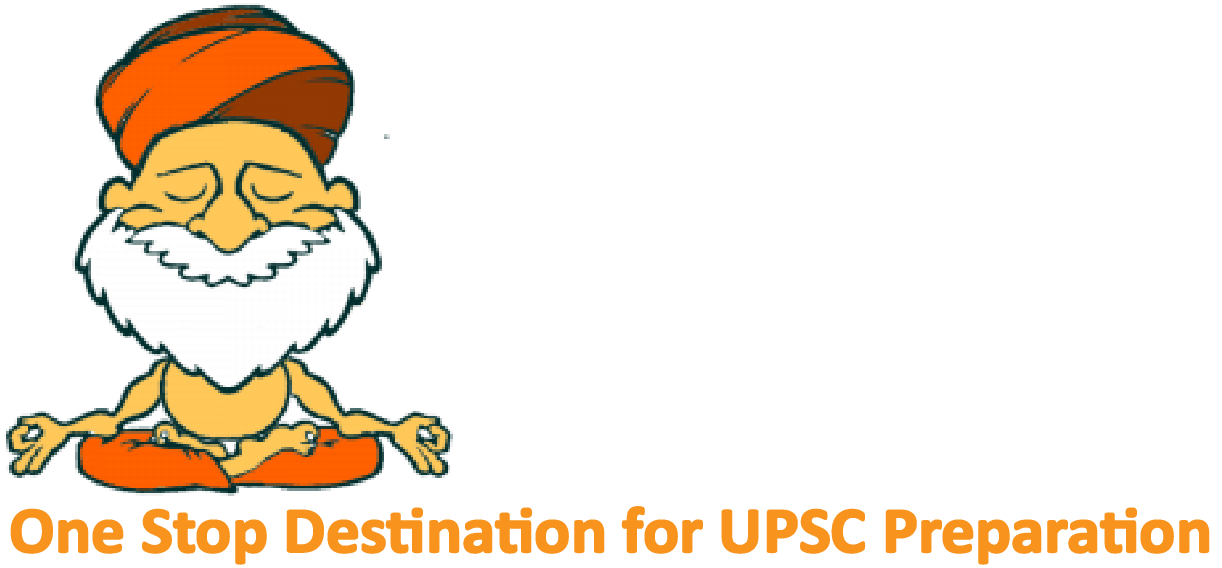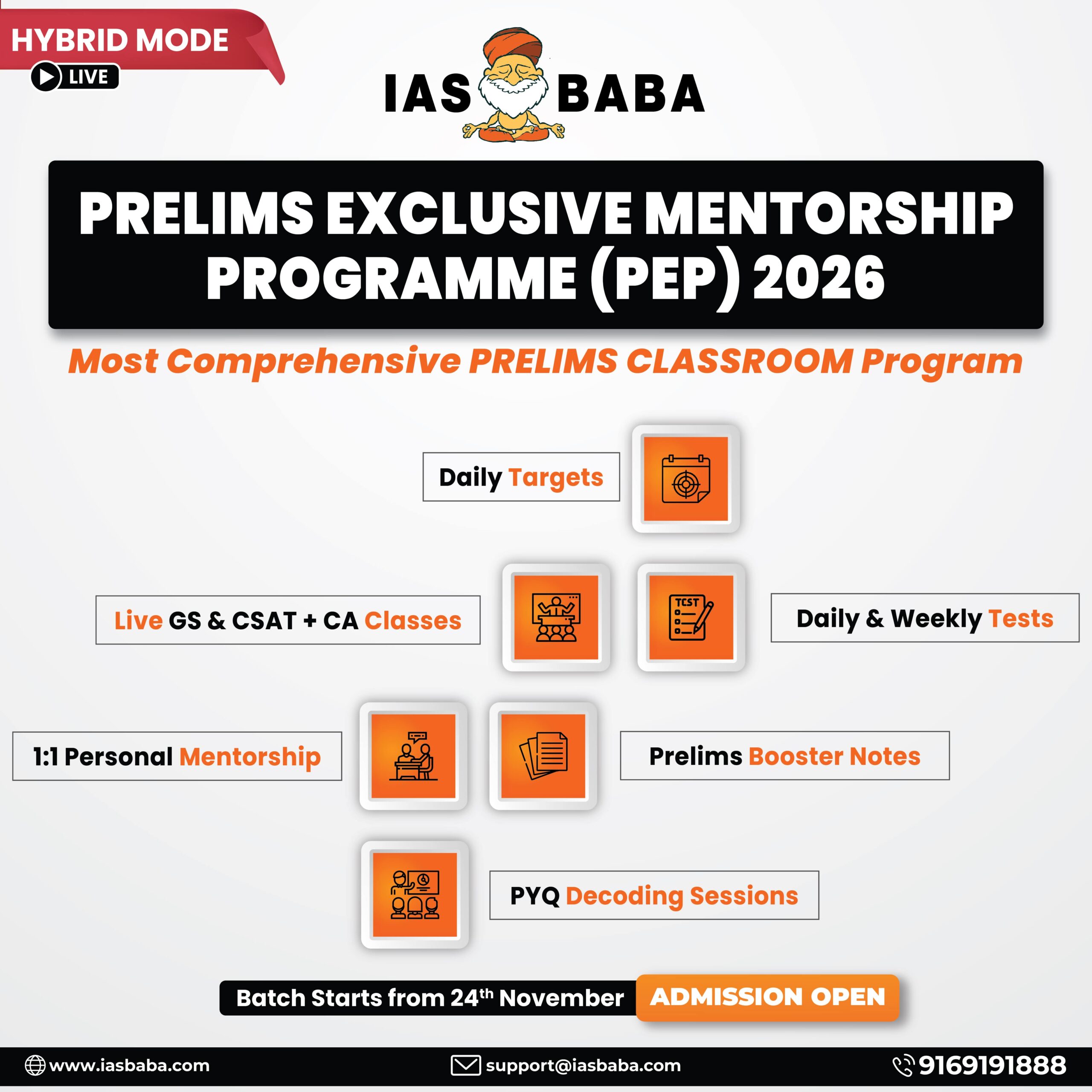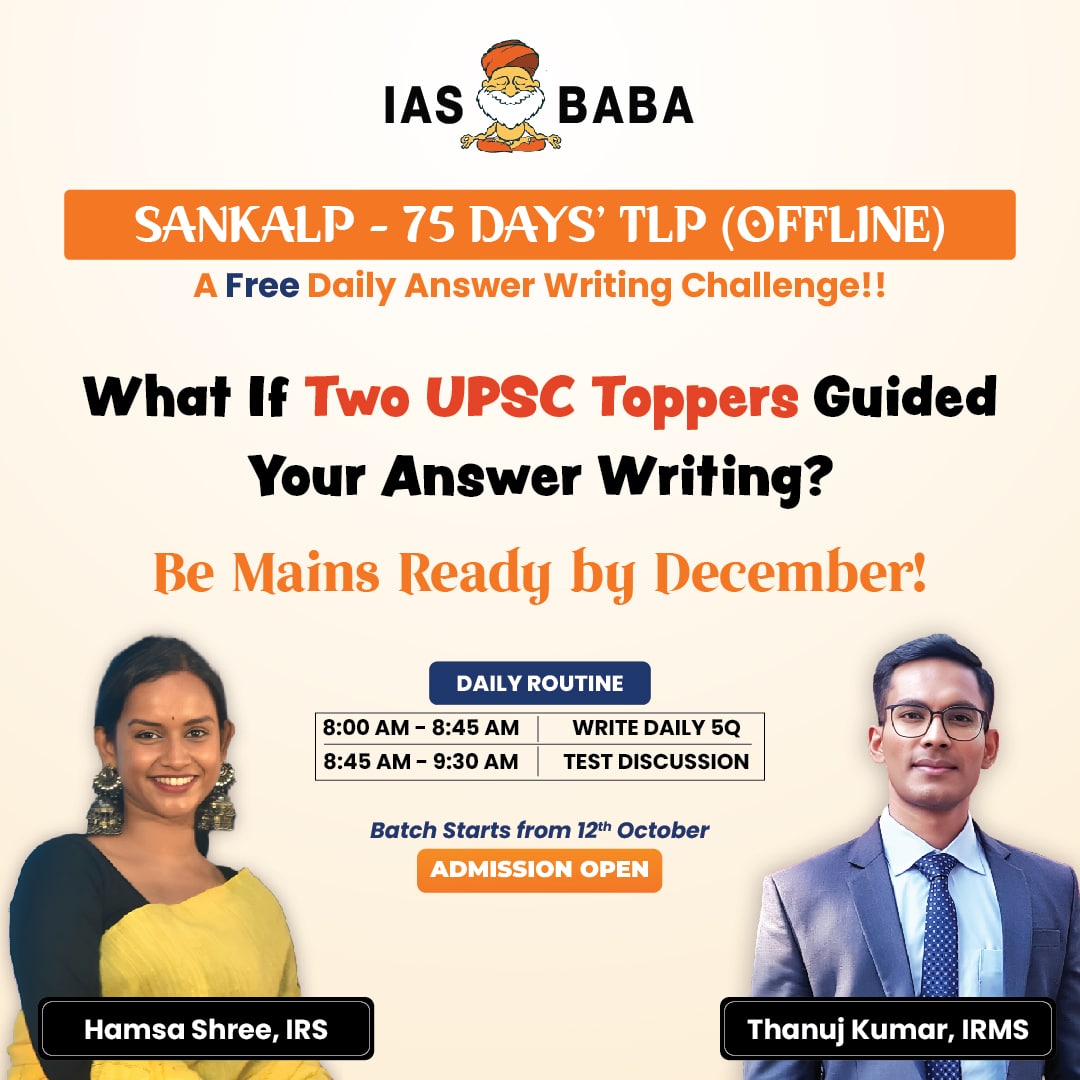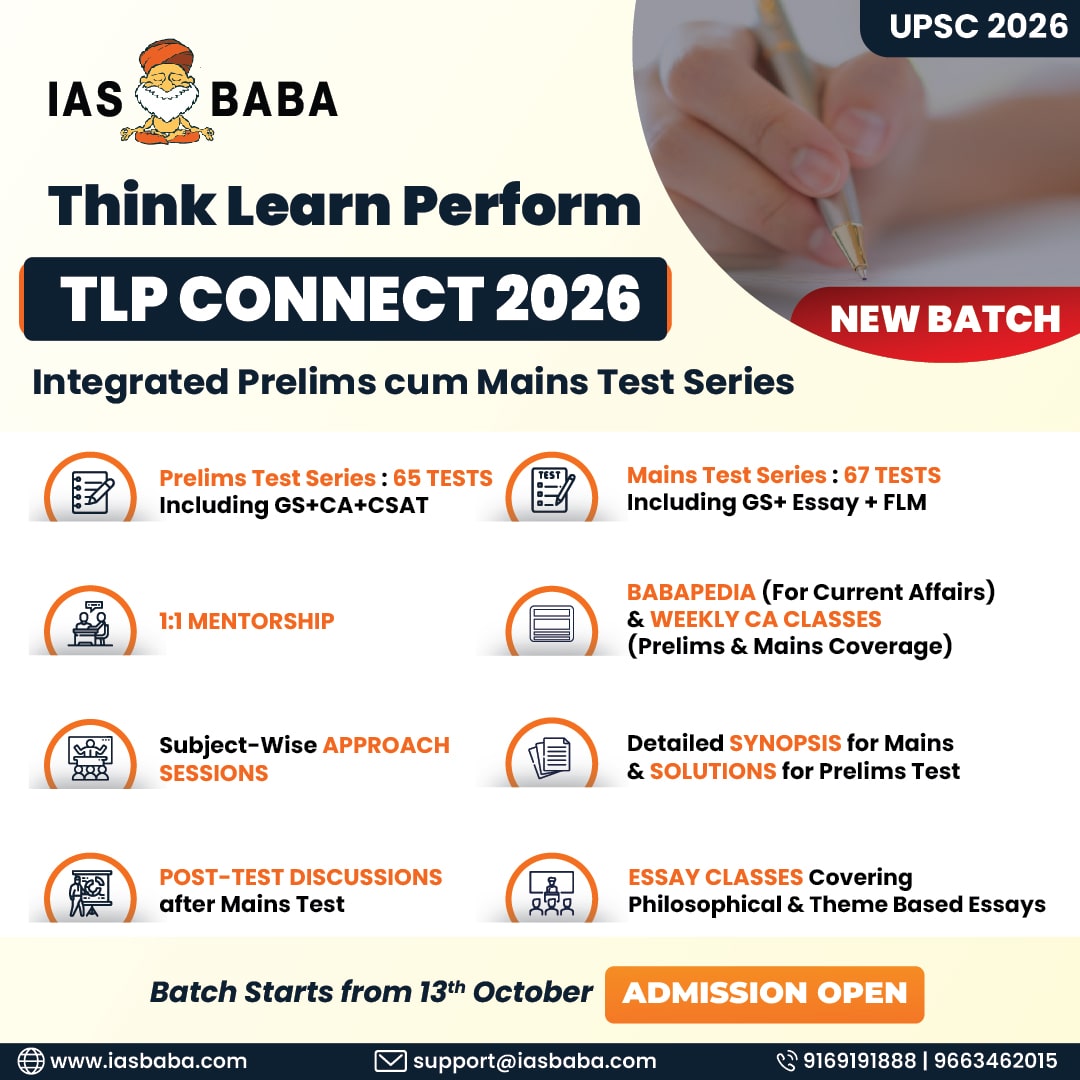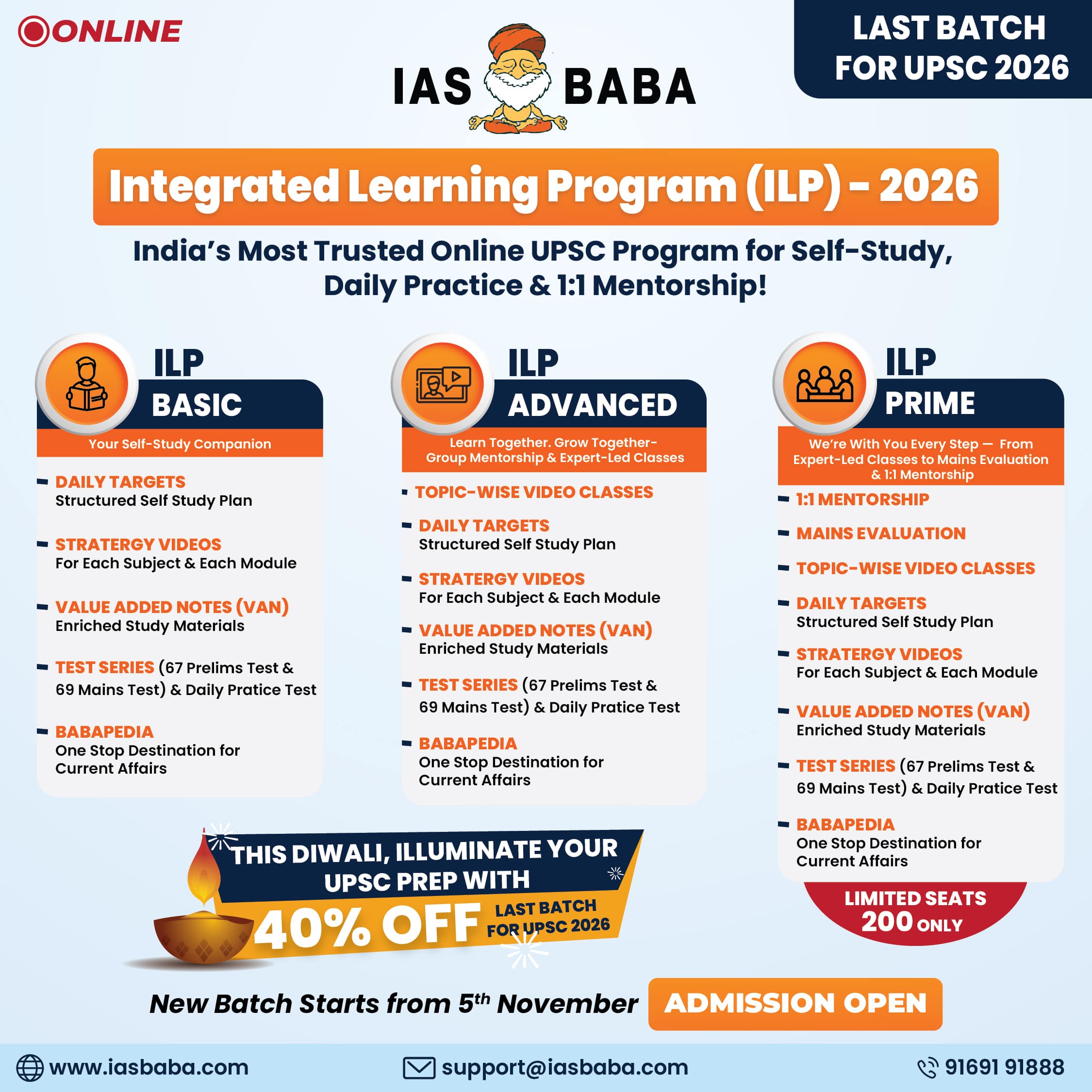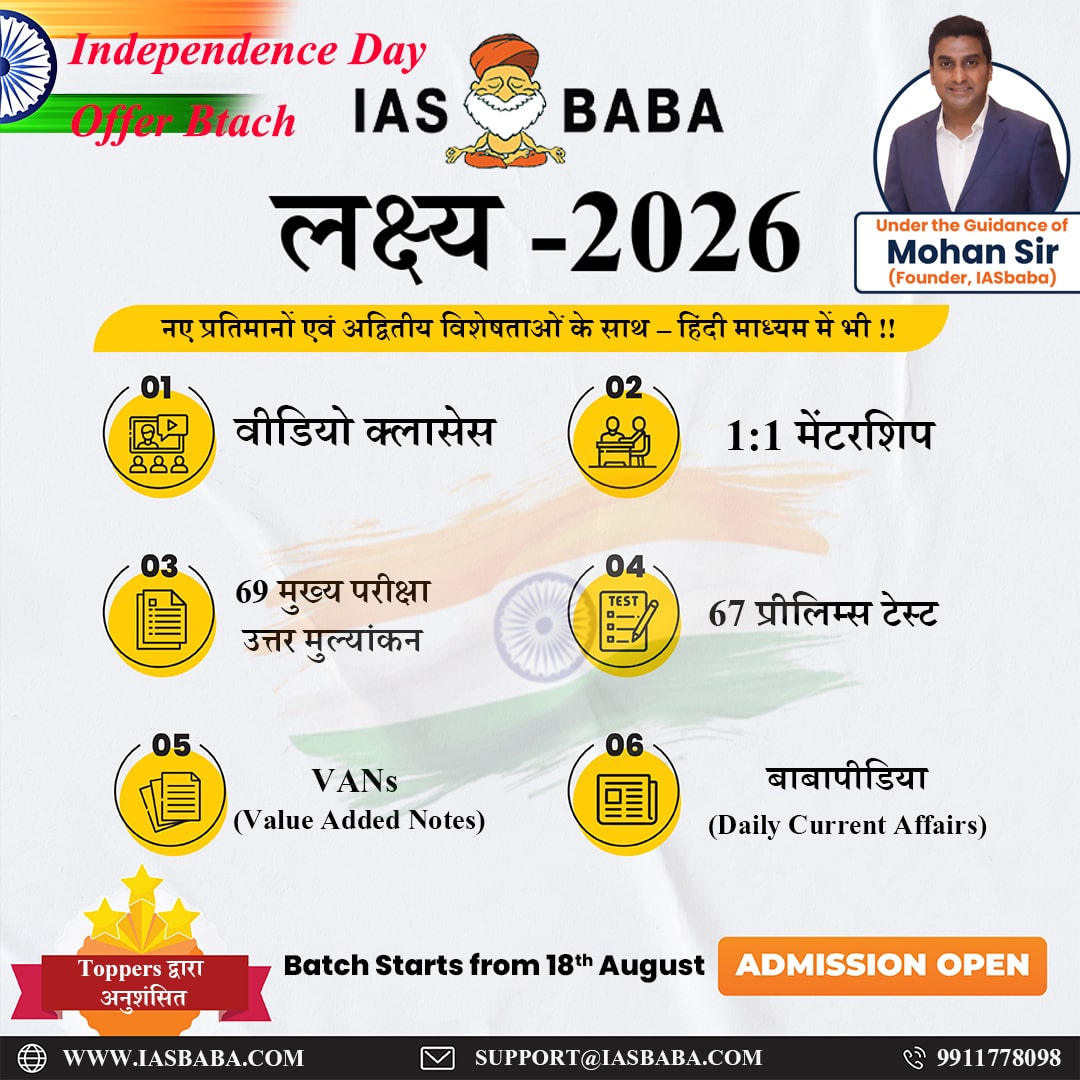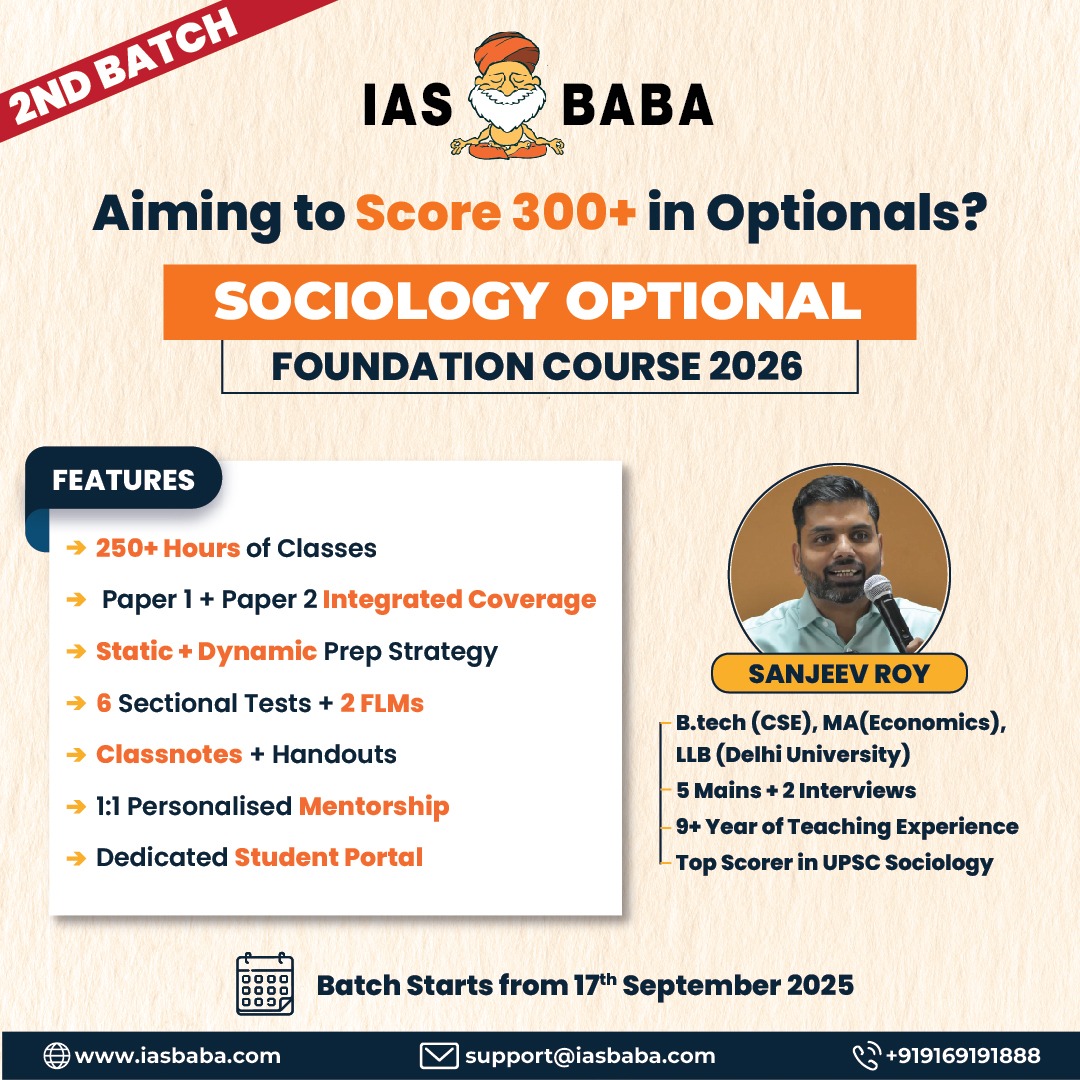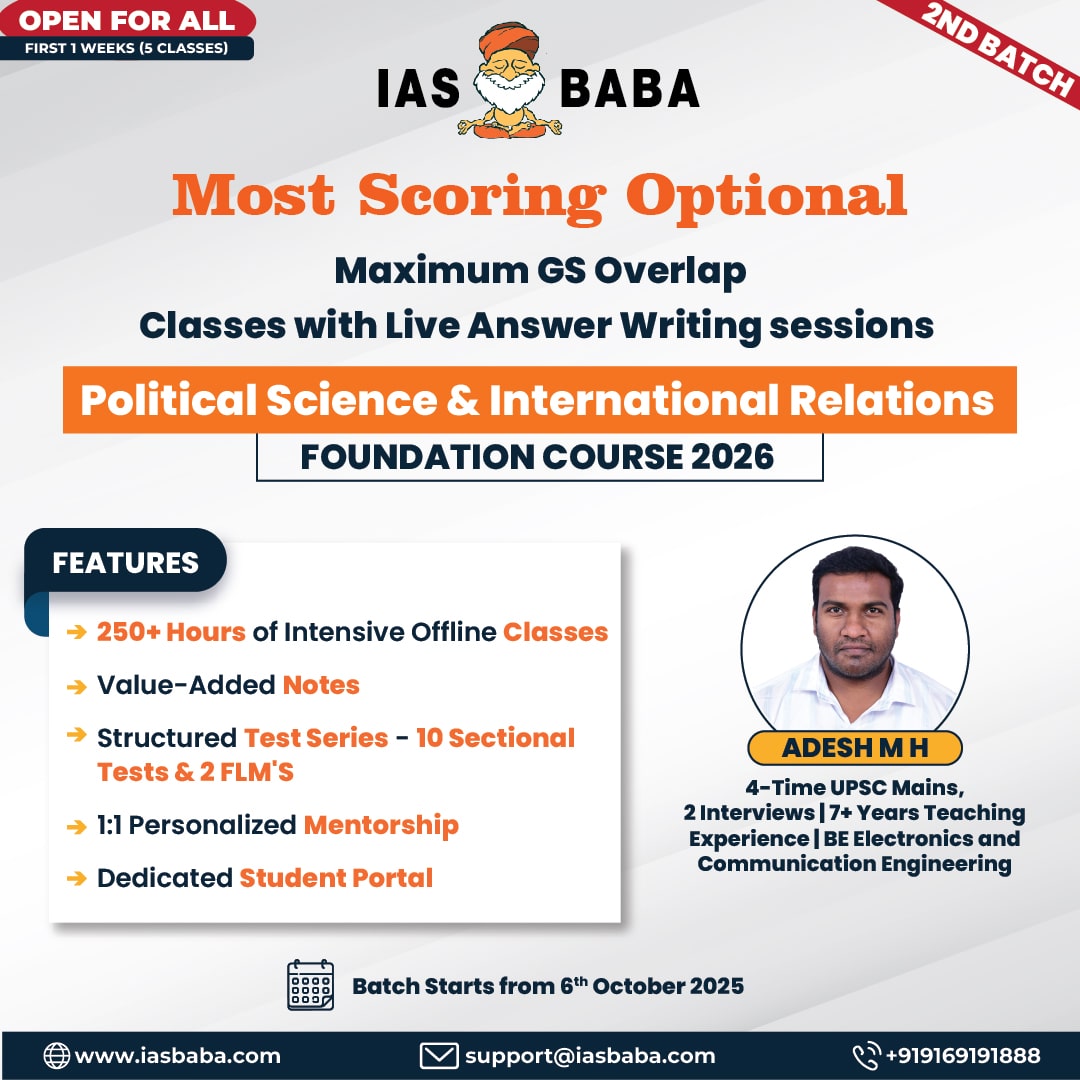IASbaba's Daily Current Affairs Analysis
Archives
(PRELIMS & MAINS Focus)
Syllabus:
- Prelims & Mains – CURRENT EVENT
Context: German Chancellor Olaf Scholz delivered a strong rebuke to U.S. Vice President J.D. Vance’s attack on Europe’s stance toward hate speech and the far right, saying it was not right for others to tell Germany and Europe what to do.
Background: –
- Mr. Vance had lambasted European leaders on the first day of the Munich Security Conference, accusing them of censoring free speech and criticising German mainstream parties’ “firewall” against the far-right Alternative for Germany (AfD).
About Munich Security Conference (MSC)
- The Munich Security Conference (MSC) is an annual forum that brings together global leaders, policymakers, and experts to discuss international security issues.
- The MSC was founded by a German official and publisher Ewald-Heinrich von Kleist at the peak of the Cold War in 1963. The conference initially focused on military issues and was mainly attended by Western countries, who came together to display a united front against Soviet communism.
- After the end of the Cold War, the conference expanded its agenda beyond defence and security to include issues like climate change and migration. It also began inviting leaders from eastern nations, including Russia, India and China.
- Today, the MSC, held in February every year, “seeks to promote trust and contribute to the peaceful resolution of conflicts by facilitating ongoing, curated, yet informal dialogue within the international security community”.
Key Takeaways from the Munich Security Conference (MSC) 2025
Shift in the Transatlantic Security Framework
- The North Atlantic Treaty Organization, has been the cornerstone of European security, ensuring collective defense against external threats. However, recent developments indicate a fundamental shift. While U.S. remains a NATO member, European nations can no longer assume automatic U.S. military support in times of crisis.
U.S.-Russia Talks on Ukraine: A Policy Shift
- The U.S. administration has initiated diplomatic talks with Russia to negotiate an end to the Ukraine war, despite strong opposition from European leaders and Kyiv.
- Notably, Ukrainian President Volodymyr Zelensky has not been invited to these talks, raising concerns about Ukraine’s exclusion from crucial negotiations affecting its sovereignty and security. The move has further strained U.S.-Europe relations.
Increased Defense Expenditure for European NATO Members
- The MSC discussions underscored the necessity for Europe to escalate its defense spending in response to Russia’s growing military assertiveness. The current NATO-mandated minimum of 2% of GDP on defense is now expected to rise to 3%.
- While the U.S. has historically provided substantial military aid to Ukraine, European nations have now surpassed the U.S. in total financial and humanitarian assistance.
U.S. Vice President JD Vance’s Controversial Speech
- U.S. V.P’s speech was widely perceived as critical of European policies. Instead of reaffirming U.S. support for Ukraine, his remarks focused on Europe’s handling of migration, free speech, and governance issues.
- His address was met with criticism from European leaders. However, the speech was well-received by certain political factions, including President Trump. This development signals growing ideological divergences between U.S. and Europe.
Economic Tensions and U.S.-Europe Trade Disputes
- Amid the discussions at MSC, Trump announced a 25% tariff on all steel and aluminum imports, effective from March. This decision exacerbates economic tensions between the U.S. and Europe, adding to existing disputes over trade policies and defense commitments.
Source: BBC
Syllabus:
- Prelims – SCIENCE & TECHNOLOGY
Context: In January, web-based portal Kaveri 2.0, which streamlines property registrations in Karnataka, faced sporadic, crippling server outages. On investigating the outage, the Revenue Department and E-Governance Department concluded that it was a Distributed Denial of Service (DDoS) attack.
Background: –
- DDoS attacks can lead to a service downtime, which is the primary goal of a DDoS attack — to render a service unavailable, leading to a disruption or potential loss of revenue.
Key takeaways
- A DDoS attack is a malicious attempt to disrupt the normal functioning of a targeted server, service, or network by overwhelming it with a flood of internet traffic.
- Unlike a Denial of Service (DoS) attack, which typically involves a single source, a DDoS attack leverages multiple compromised systems, often infected with malware, to generate the traffic. These compromised systems are collectively known as a botnet. Such attacks may be aimed at saturating the bandwidth of a site, exploiting weaknesses in the network protocol stack, or targeting specific weaknesses in applications or services.
- While DDoS attacks do not directly steal data, they can be used as a distraction while other forms of cyberattacks, such as data breaches, are executed.
- The Kaveri 2.0 portal, critical for property registrations, experienced performance issues recently. Fake accounts were created, and entries were made into the database using these accounts, overwhelming the system. The attack involved 62 email accounts originating from 14 IP addresses, highlighting the distributed nature of the assault.
Ways to mitigate such attacks
- Organisations implement advanced traffic filtering mechanisms to distinguish between legitimate and malicious traffic. Monitoring tools can help identify unusual traffic patterns and take pre-emptive actions.
- Enforcing rate limiting can control the number of requests a user can make in a given time frame, preventing the system from being overwhelmed.
- Bot detection technologies, such as CAPTCHA challenges and behavioural analysis, can identify and block automated tools or bots.
- Robust authentication mechanisms and regular security audits can strengthen the security of online services and prevent unauthorised access.
Source: The Hindu
Syllabus:
- Prelims & Mains – POLITY
Context: Four days after Manipur Chief Minister N. Biren Singh’s resignation, the Union government announced that President’s rule has been implemented in the violence-hit State.
Background:
- The violence between the Meitei and Kuki-Zo communities, ongoing since May 2023, has claimed above 250 lives and displaced over 60,000 people.
- The conflict originated from the Meitei demand for Scheduled Tribe (ST) status, which the Kukis opposed, fearing loss of job opportunities and other affirmative actions meant for STs.
Key takeaways
- Emergency provisions, inspired by the German Constitution, protect India’s sovereignty, unity and security. They empower the Central government to address extraordinary crises by temporarily assuming control.
- The Constitution provides for three types of emergencies — national (Article 352), State (Article 356) and financial (Article 360).
- In Manipur, the President has proclaimed a “state emergency” — popularly known as “President’s Rule” or “Constitutional Emergency” — by exercising powers under Article 356. This fulfils the Union’s obligation under Article 355 to protect States against ‘external aggression’ and ‘internal disturbance’ and to ensure that State governments operate as per the Constitution.
- When a State’s “constitutional machinery” fails due to non-performance or malperformance, Article 356(1) empowers the President to issue a proclamation — if she is satisfied that the State government cannot function constitutionally. This effectively transfers all executive functions of the State to the Centre and legislative functions to Parliament while leaving the High Court’s (HC) powers unaffected.
- Additionally, Article 365 provides that if a State fails to comply with any Union directions under constitutional provisions, the President may declare a “Constitutional Emergency.”
- As per Clause 3 of Article 356, the proclamation must be laid before each House of Parliament, and unless approved by a ‘simple majority’ in both Houses, it ceases after two months. Once approved, it remains effective for six months from the proclamation date, with further six-month extensions requiring additional Parliamentary approval.
- Renewal beyond one year is allowed only if two conditions are met — an Emergency has been declared in the country or any part of the State, and if the Election Commission certifies that President’s rule is necessary due to difficulties in conducting State elections. In no case can the proclamation remain effective for more than three years.
How is a ‘constitutional emergency’ different from a ‘national emergency’?
- Article 352 governs the proclamation of a “national emergency,” which has been invoked thrice — during the 1962 India-China war, the 1971-armed conflict with Pakistan, and in 1975 on grounds of “internal disturbance.”
- Unlike a “State emergency,” proclaiming a “national emergency” requires that the President be satisfied that India’s security — or any part of its territory — is threatened by war, external aggression, or armed rebellion.
- The 44th Constitutional amendment (1978) introduced safeguards against misuse. It replaced “internal disturbance” with “armed rebellion”, mandated a written recommendation from the Cabinet, and shortened the parliamentary approval window from two months to one month. It clarified that Articles 20 and 21 cannot be suspended, and that the President must revoke the proclamation if the Lok Sabha passes a resolution disapproving it. The amendment restored judicial review of the President’s satisfaction in proclaiming an emergency, a safeguard removed by the 38th Constitutional amendment (1975).
- Unlike a “constitutional emergency” (which can last up to three years), a “national emergency” has no time limit.
- Additionally, while the President’s rule (Article 356) requires a ‘simple majority’ for parliamentary approval, a national emergency needs a ‘special majority’.
- In a national emergency, the State executive and legislature continue to function, whereas under President’s Rule, the State executive is dismissed, and the legislature is suspended or dissolved.
- President’s rule does not affect citizens’ fundamental rights, unlike a national emergency, where under Article 358, freedoms under Article 19 become inoperative, and the President may suspend other fundamental rights, except Articles 20 and 21.
Source: The Hindu
Syllabus:
- Prelims & Mains – POLITY
Context: Sixteen years since The Scheduled Tribes and Other Traditional Forest Dwellers (Recognition of Forest Rights) Act, 2006 (also known as FRA) was introduced in January 2008, forest dwellers continue to face significant hurdles.
Background: –
- Only three states in India have recognised a notable number of Community Forest Resource (CFR) rights, with Maharashtra being the only state where these rights have been operationalised, an analysis has noted.
Key takeaways
- The Scheduled Tribes and Other Traditional Forest Dwellers (Recognition of Forest Rights) Act, 2006, commonly known as the Forest Rights Act (FRA), is a significant piece of legislation in India aimed at recognizing and vesting forest rights in forest-dwelling communities.
Recognition of Forest Rights:
- The Act grants legal recognition to the rights of Scheduled Tribes (STs) and Other Traditional Forest Dwellers (OTFDs) who have been living in forests for generations but lacked legal ownership.
- It acknowledges both individual rights (e.g., land rights) and community rights (e.g., rights over common resources).
Eligibility Criteria:
- Scheduled Tribes (STs): They must be residing in the forest land before 13th December 2005 and depend on forests for livelihood.
- Other Traditional Forest Dwellers: Non-tribal communities who have been living in forests for at least three generations (75 years) prior to December 13, 2005, and depend on forests for their livelihood.
- Land Ceiling: The Act sets a ceiling on the extent of land that can be recognized under individual rights, typically up to 4 hectares, subject to state-specific variations.
Types of Rights Recognized:
- Individual Rights: Rights to land and resources that have been traditionally accessed by individuals or families.
- Community Rights: Rights over common property resources, including grazing grounds, water bodies, and traditional seasonal resource access.
- Right to Protect and Conserve: Rights to protect, regenerate, conserve, or manage any community forest resource traditionally protected and conserved by the community.
- Right to Intellectual Property: Rights over traditional knowledge related to biodiversity and cultural diversity.
- Right to Rehabilitation: If eviction is required for conservation, proper rehabilitation must be ensured.
Gram Sabha’s Role:
- The Gram Sabha (village assembly) plays a crucial role in initiating the process of determining forest rights.
- It is responsible for receiving claims, consolidating and verifying them, and then passing resolutions to be forwarded to higher authorities.
- No forest rights can be acquired or transferred without the consent of the Gram Sabha.
Claims Process:
- Forest-dwelling communities can file claims for recognition of their rights.
- The claims are verified and approved at various levels, including the Gram Sabha, Sub-Divisional Level Committee (SDLC), and District Level Committee (DLC).
Protection from Eviction:
- The Act provides protection to forest-dwelling communities from eviction or displacement without the recognition and verification of their rights.
- It ensures that no member of a forest-dwelling community can be evicted until the process of recognition and verification of rights is complete.
Source: Down To Earth
Syllabus:
- Prelims – SCIENCE & TECHNOLOGY
Context: Indirect prompt injection, a technique that manipulates chatbots into executing malicious commands, has become a significant concern for developers and users alike.
Background: –
- Despite efforts by tech giants like Google and OpenAI to fortify their systems, hackers continue to exploit vulnerabilities, leading to potential data breaches and misinformation.
Key takeaways
- Indirect prompt injection attacks are a significant security concern in the realm of generative AI systems, particularly those utilizing large language models (LLMs).
- Unlike direct prompt injections, where attackers input malicious commands directly into the AI system, indirect prompt injections involve embedding harmful instructions within external data sources that the AI system accesses. This can lead the AI to perform unintended actions, potentially compromising data integrity and user trust.
Mechanism of Indirect Prompt Injection Attacks:
- Embedding Malicious Instructions: Attackers insert concealed commands into data sources such as emails, documents, or web content. For instance, a malicious prompt might be hidden within an email that, when processed by an AI assistant, instructs the system to leak sensitive information or perform unauthorized actions.
- Exploitation Through Data Access: When the AI system accesses and processes this tainted data, it inadvertently executes the embedded instructions. This occurs because the AI cannot distinguish between legitimate data and malicious commands within the content it processes.
Potential Risks:
- Data Exfiltration: The AI might be manipulated to extract and transmit confidential information to unauthorized entities.
- Propagation of Malicious Content: In scenarios where AI systems generate or summarize content, they might unknowingly disseminate harmful instructions embedded within the source material.
- Unauthorized Actions: AI systems integrated with tools or plugins could be directed to perform actions beyond their intended scope, such as sending unauthorized emails or accessing restricted data.
Mitigation Strategies:
- Input Validation and Sanitization: Implement rigorous checks to detect and neutralize hidden commands within external data before processing.
- Contextual Differentiation: Enhance the AI’s ability to distinguish between executable instructions and regular data content, reducing the likelihood of unintended command execution.
- Restricting External Data Access: Limit the AI system’s interaction with untrusted or unverified data sources to minimize exposure to potential threats.
- Human Oversight: Incorporate human review mechanisms for AI outputs, especially when dealing with sensitive information or actions, to catch anomalies.
Source: The Hindu
Practice MCQs
Q1.) Which of the following statements regarding President’s Rule under Article 356 of the Indian Constitution is/are correct?
- President’s Rule can be imposed in a state if the constitutional machinery of that state has failed.
- The proclamation of President’s Rule must be approved by a simple majority in both Houses of Parliament within two months.
- Once approved, President’s Rule can remain in force indefinitely.
Select the correct answer using the codes below:
(a) 1 and 2 only
(b) 2 and 3 only
(c) 1 and 3 only
(d) 1, 2, and 3
Q2.) Under the Forest Rights Act (FRA), 2006, which of the following rights are recognized?
- Individual forest rights over land for cultivation.
- Community rights over common property resources such as grazing grounds.
- Rights to protect and conserve forests and biodiversity.
- Absolute rights over protected areas granted to individuals.
Select the correct answer using the codes below:
(a) 1 and 2 only
(b) 2 and 3 only
(c) 1, 2, and 3 only
(d) 1, 2, 3, and 4
Q3.) Which of the following statements about indirect prompt injection attacks is/are correct?
- Indirect prompt injection involves embedding malicious commands within external data sources like emails or web content.
- These attacks can lead to unauthorized actions being executed by AI systems.
- Restricting external data access and implementing input validation can help mitigate such attacks.
Select the correct answer using the codes below:
(a) 1 and 2 only
(b) 2 and 3 only
(c) 1 and 3 only
(d) 1, 2, and 3
Comment the answers to the above questions in the comment section below!!
ANSWERS FOR ’ Today’s – Daily Practice MCQs’ will be updated along with tomorrow’s Daily Current Affairs
ANSWERS FOR 15 February – Daily Practice MCQs
Q.1) – c
Q.2) – b
Q.3) – b

